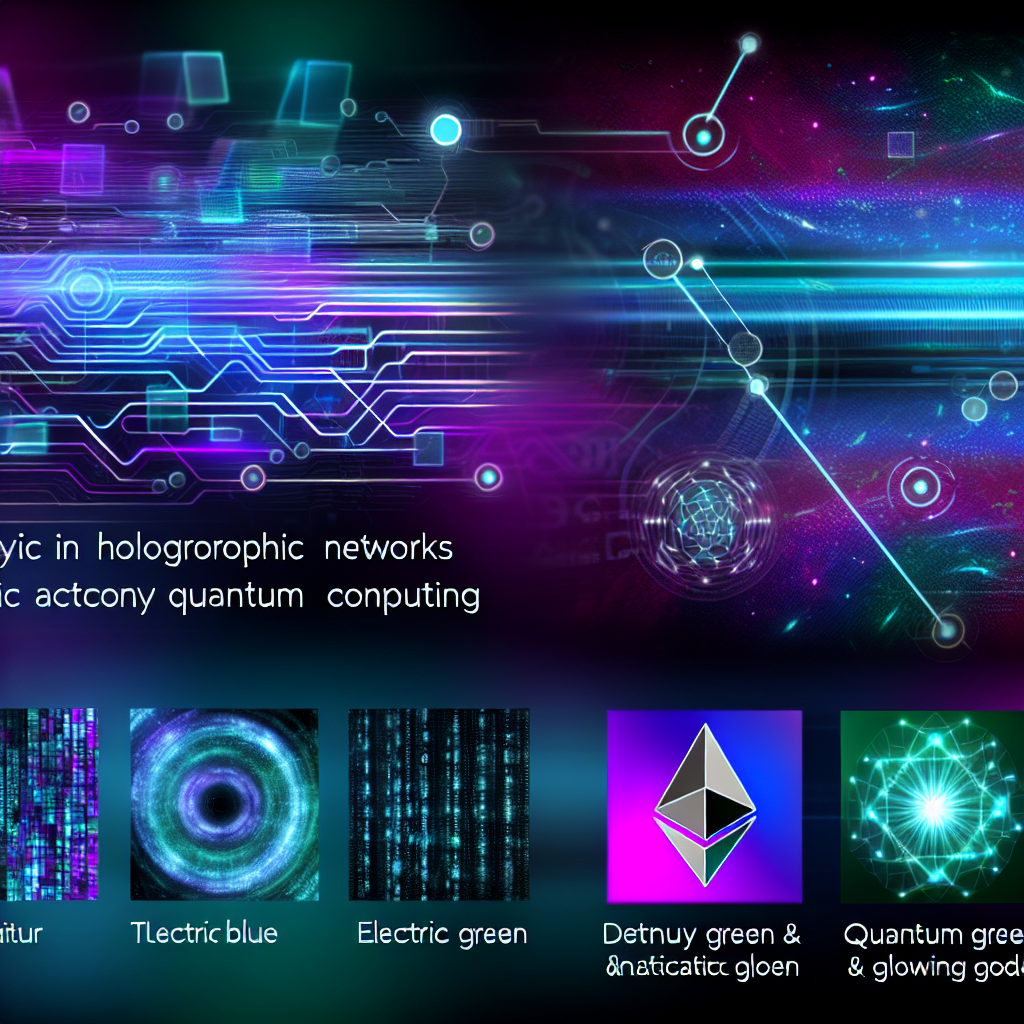Ethereum: A Comprehensive Overview
Ethereum is a decentralized platform that enables developers to build and deploy smart contracts and decentralized applications (dApps). Since its inception in 2015, Ethereum has emerged as a cornerstone of the blockchain revolution, drawing attention from technologists, investors, and innovators alike. This article aims to provide a comprehensive overview of Ethereum, exploring its architecture, functionality, and the ecosystem surrounding it.
Understanding Blockchain and Ethereum
To grasp Ethereum, one must first understand the concept of blockchain. A blockchain is a distributed ledger technology that records transactions across many computers in a way that the registered transactions cannot be altered retroactively. This decentralization ensures transparency and security, making it an attractive option for various applications beyond cryptocurrency.
Ethereum builds upon this foundational technology but introduces a more versatile framework. While Bitcoin primarily serves as a digital currency, Ethereum broadens the scope by allowing developers to create programs that run on its blockchain. This is achieved through Ethereum’s native programming language, Solidity, which is designed for writing smart contracts.
Smart Contracts: The Heart of Ethereum
Smart contracts are self-executing contracts with the terms of the agreement directly written into code. Once deployed on the Ethereum blockchain, these contracts automatically execute when predefined conditions are met, eliminating the need for intermediaries. This functionality opens the door to numerous applications, ranging from financial services to supply chain management.
The potential of smart contracts lies in their programmability and reliability. They help reduce the risks associated with traditional contracts, such as human error and fraud. Moreover, once a smart contract is deployed, it cannot be altered, ensuring that all parties adhere to the agreed-upon terms.
The Ethereum Virtual Machine (EVM)
At the core of Ethereum’s architecture is the Ethereum Virtual Machine (EVM). The EVM acts as a runtime environment for executing smart contracts and dApps. It is a decentralized computing environment that allows developers to build applications without worrying about underlying infrastructure. The EVM enables Ethereum to be Turing-complete, meaning that it can execute any computable function given sufficient resources.
When a smart contract is deployed, it is stored on the blockchain and can be accessed by anyone. Each time the contract is executed, it consumes computational resources, measured in gas. Gas is a unit that measures the amount of computational effort required to execute specific operations. Users pay for gas in Ether (ETH), Ethereum’s native cryptocurrency, incentivizing miners to validate transactions and maintain network security.
Decentralized Applications (dApps)
Decentralized applications, or dApps, leverage the capabilities of smart contracts to provide various services without relying on a central authority. They can be built for numerous purposes, including finance, gaming, and social networking. DApps are designed to be open-source, allowing anyone to participate in their development and improvement.
The rise of dApps has led to the emergence of several notable projects within the Ethereum ecosystem. For example, decentralized finance (DeFi) applications have gained considerable traction, allowing users to lend, borrow, and trade assets without relying on traditional financial institutions. Similarly, non-fungible tokens (NFTs) have redefined the digital art market, enabling the ownership of unique digital assets.
Ethereum’s Ecosystem and Community
The Ethereum ecosystem is vast and continually evolving. It comprises developers, users, institutions, and various projects striving to push the boundaries of what is possible with blockchain technology. The Ethereum Foundation, a non-profit organization, plays a crucial role in supporting the development of the platform and fostering community engagement.
One of the most significant events in Ethereum’s timeline is the transition from Ethereum 1.0 to Ethereum 2.0. This upgrade aims to enhance scalability, security, and energy efficiency. Ethereum 2.0 introduces a proof-of-stake (PoS) consensus mechanism, replacing the energy-intensive proof-of-work (PoW) model. In PoS, validators are chosen to create new blocks and confirm transactions based on the amount of Ether they hold and are willing to “stake” as collateral. This shift not only reduces energy consumption but also aligns the interests of validators with the network’s health.
The Future of Ethereum
As Ethereum continues to evolve, its future remains a topic of intense speculation and hope. The transition to Ethereum 2.0 is expected to unlock new possibilities, including greater scalability through sharding, which splits the blockchain into smaller, more manageable pieces. This enhancement will allow Ethereum to process significantly more transactions per second, addressing one of the platform’s most pressing limitations.
Moreover, ongoing developments in the DeFi space indicate a growing trend toward decentralized financial systems that can operate independently of traditional banking infrastructure. This shift could lead to a financial landscape characterized by increased accessibility and reduced barriers to entry.
Challenges and Considerations
Despite its promise, Ethereum is not without challenges. Scalability, security, and regulatory concerns are ongoing issues that the community must address. While the transition to Ethereum 2.0 aims to mitigate scalability challenges, the complexity of the upgrade process raises concerns about potential risks and vulnerabilities.
Furthermore, as Ethereum gains traction, regulatory scrutiny is likely to increase. Governments and financial institutions worldwide are grappling with how to regulate cryptocurrencies and blockchain technologies. The outcome of these discussions will significantly impact Ethereum’s adoption and development in the coming years.
In conclusion, Ethereum represents a paradigm shift in how we conceptualize digital transactions, contracts, and applications. Its foundational technology empowers developers to create decentralized solutions across various sectors, fostering innovation and collaboration. As Ethereum continues to mature, its ability to adapt to challenges and embrace opportunities will determine its role in shaping the future of technology and finance. For those looking to embark on their Ethereum journey, understanding its core principles, functionalities, and ongoing developments is essential. The landscape is rich with potential, and as technology evolves, so too will the possibilities within the Ethereum ecosystem.


